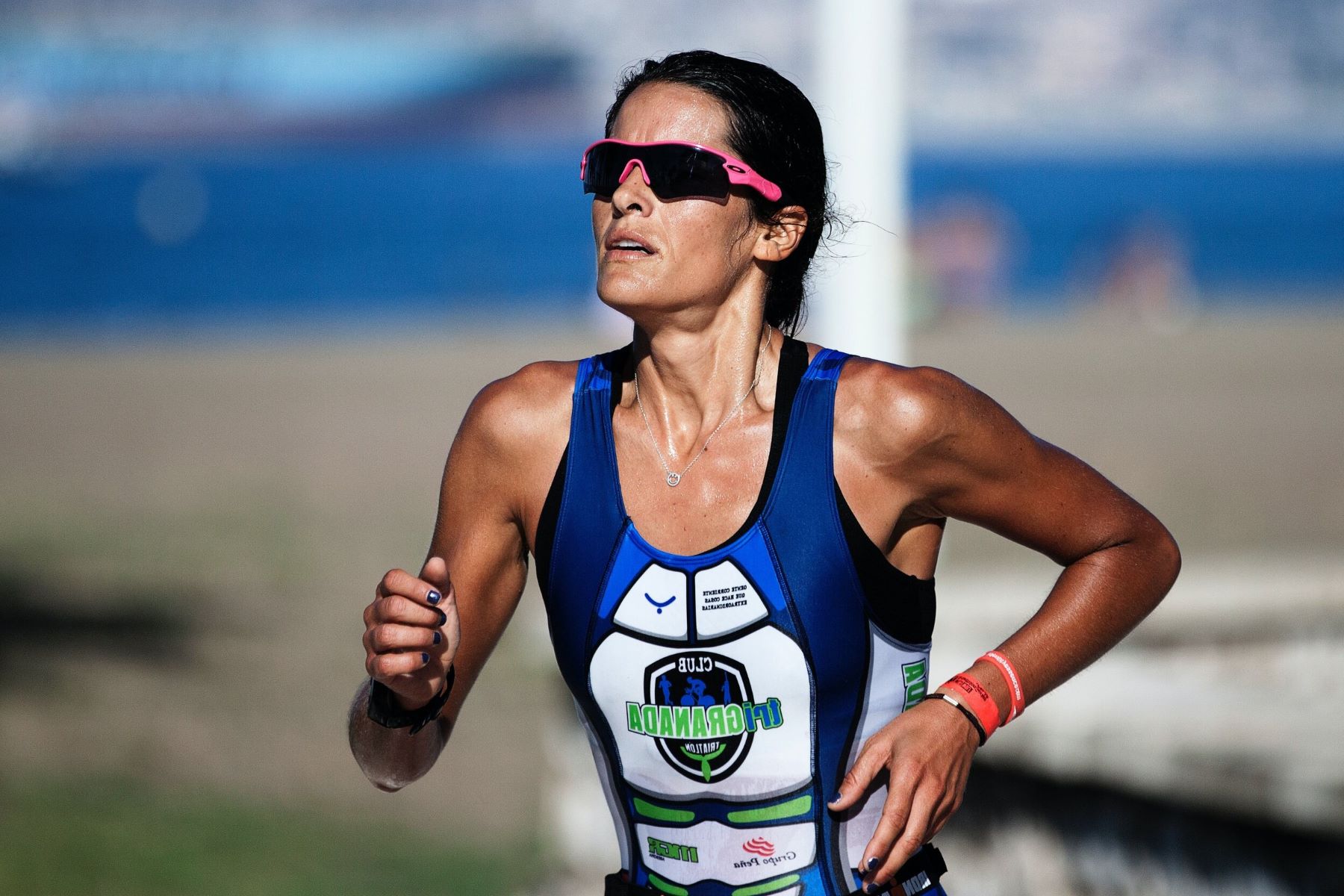Home>Health & Nutrition>What Is The Method For Calculating Maximum Heart Rate During Running?


Health & Nutrition
What Is The Method For Calculating Maximum Heart Rate During Running?
Published: February 25, 2024
Learn the method for calculating maximum heart rate during running for optimal health and nutrition. Discover how to determine your maximum heart rate for effective training.
(Many of the links in this article redirect to a specific reviewed product. Your purchase of these products through affiliate links helps to generate commission for Therunningadvisor.com, at no extra cost. Learn more)
Table of Contents
- Understanding the Importance of Maximum Heart Rate in Running
- Factors Affecting Maximum Heart Rate During Running
- Common Methods for Calculating Maximum Heart Rate
- The Karvonen Formula: A Popular Method for Determining Maximum Heart Rate
- Using Heart Rate Monitors to Measure Maximum Heart Rate
- Adjusting Training Intensity Based on Maximum Heart Rate
Understanding the Importance of Maximum Heart Rate in Running
Understanding the significance of maximum heart rate is crucial for runners seeking to optimize their training and performance. Maximum heart rate, often abbreviated as MHR, represents the highest number of heartbeats per minute during intense physical activity. It serves as a fundamental indicator of cardiovascular fitness and plays a pivotal role in tailoring training regimens to achieve specific fitness goals.
During running, the heart functions as a vital pump, supplying oxygen-rich blood to the working muscles. The intensity of the exercise directly influences the heart rate, with higher exertion levels correlating to an increased heart rate. By determining an individual's maximum heart rate, runners can establish personalized training zones, enabling them to train at the appropriate intensity for their fitness objectives.
Moreover, understanding maximum heart rate aids in preventing overexertion and potential injury. By staying within the recommended heart rate zones, runners can optimize their workouts while minimizing the risk of overtraining, fatigue, and burnout. This knowledge empowers runners to strike a balance between pushing their limits and allowing for adequate recovery, ultimately enhancing their overall performance and well-being.
In essence, comprehending the importance of maximum heart rate in running empowers individuals to make informed decisions about their training intensity, enabling them to maximize their cardiovascular fitness, improve endurance, and achieve their running goals effectively.
Factors Affecting Maximum Heart Rate During Running
Several factors influence an individual's maximum heart rate during running, encompassing physiological, environmental, and genetic elements. Understanding these factors is pivotal in comprehending the dynamic nature of maximum heart rate and its implications for running performance.
-
Age: Age is a primary determinant of maximum heart rate. As individuals age, their maximum heart rate typically decreases. This natural decline is attributed to age-related changes in the cardiovascular system, including reduced heart muscle elasticity and diminished responsiveness to sympathetic stimulation. Consequently, older runners often have a lower maximum heart rate compared to their younger counterparts.
-
Fitness Level: The level of cardiovascular fitness significantly impacts maximum heart rate. Well-trained runners tend to exhibit lower resting heart rates and higher maximum heart rates compared to sedentary individuals. Regular aerobic exercise enhances the heart's efficiency, enabling it to pump more blood with each beat. Consequently, individuals with higher fitness levels may achieve a higher maximum heart rate during running.
-
Genetics: Genetic predispositions play a role in determining an individual's maximum heart rate. While maximum heart rate can be influenced by training, genetic factors contribute to the baseline level. Variations in cardiac muscle structure, autonomic nervous system function, and hormonal regulation can influence an individual's inherent maximum heart rate potential.
-
Temperature and Humidity: Environmental conditions, such as temperature and humidity, can impact maximum heart rate during running. In hot and humid environments, the body must work harder to dissipate heat, leading to an increased heart rate to support the elevated demand for blood flow to the skin and muscles. Conversely, cold temperatures can prompt vasoconstriction, elevating heart rate to maintain adequate blood circulation.
-
Altitude: Running at higher altitudes can affect maximum heart rate due to reduced oxygen availability. The body compensates for the lower oxygen levels by increasing heart rate to enhance oxygen delivery to the muscles. This adjustment is essential for runners acclimating to altitude training or participating in races at elevated locations.
-
Emotional and Psychological Factors: Emotional and psychological states, such as stress, anxiety, and excitement, can influence maximum heart rate during running. Heightened emotional arousal can stimulate the sympathetic nervous system, leading to an increase in heart rate. Conversely, relaxation and positive mental states may result in a lower heart rate response during running.
Understanding the multifaceted nature of these factors is essential for runners aiming to optimize their training and performance. By considering these influences, individuals can tailor their running strategies to accommodate the dynamic interplay of physiological, environmental, and genetic elements impacting maximum heart rate.
Common Methods for Calculating Maximum Heart Rate
When it comes to determining maximum heart rate (MHR) for running, several methods are commonly employed to provide individuals with a reliable estimate. These methods serve as valuable tools for tailoring training programs and optimizing performance based on personalized heart rate zones. Understanding these common calculation approaches is essential for runners seeking to harness the benefits of heart rate-based training.
One prevalent method for estimating maximum heart rate is the age-based formula, which suggests that MHR can be approximated by subtracting one's age from 220. While this approach offers a straightforward and easily accessible calculation, it is important to note that individual variations in cardiovascular fitness and genetic predispositions may lead to deviations from this general estimation. As a result, some individuals may find that their actual maximum heart rate differs significantly from the value predicted by the age-based formula.
Another widely utilized method involves the use of predictive equations, such as the Tanaka formula, which takes into account age and provides a more nuanced estimation of maximum heart rate. The Tanaka formula calculates MHR as 208 minus 0.7 times the individual's age, offering a slightly different perspective compared to the traditional 220-minus-age approach. This variation underscores the importance of considering multiple calculation methods to obtain a comprehensive understanding of one's maximum heart rate.
Furthermore, the concept of individualized testing, such as the use of graded exercise tests or maximal stress tests, presents a more precise approach to determining maximum heart rate. These assessments involve monitoring heart rate responses during incremental exercise to pinpoint the peak heart rate achieved by an individual. While individualized testing offers a highly accurate means of establishing MHR, it typically requires specialized equipment and professional supervision, making it less accessible for the general running population.
Additionally, advancements in wearable fitness technology have popularized the use of heart rate monitors and fitness trackers for estimating maximum heart rate. These devices leverage algorithms and real-time heart rate data to calculate personalized MHR values, providing runners with convenient and practical insights into their cardiovascular performance. By continuously monitoring heart rate during various running intensities, individuals can obtain a more personalized and dynamic representation of their maximum heart rate.
In summary, the common methods for calculating maximum heart rate encompass age-based formulas, predictive equations, individualized testing, and wearable fitness technology. Each approach offers unique advantages and considerations, empowering runners to make informed decisions regarding their training intensity and heart rate-based performance optimization. By familiarizing themselves with these calculation methods, individuals can gain valuable insights into their maximum heart rate, thereby enhancing their running experience and overall cardiovascular fitness.
The Karvonen Formula: A Popular Method for Determining Maximum Heart Rate
The Karvonen Formula, named after Finnish physiologist Martti Karvonen, stands as a widely embraced method for calculating maximum heart rate (MHR) and establishing personalized heart rate training zones. This formula offers a more nuanced and individualized approach by incorporating resting heart rate (RHR) into the calculation, thereby providing a more accurate representation of an individual's cardiovascular capacity.
The fundamental principle underlying the Karvonen Formula involves factoring in the resting heart rate to determine the target heart rate range for various training intensities. By considering the resting heart rate as a baseline indicator of cardiovascular fitness, this formula accounts for the inherent differences in heart rate dynamics among individuals, offering a more tailored and precise estimation of maximum heart rate.
The Karvonen Formula is expressed as follows:
Target Heart Rate = (Heart Rate Reserve × Training Intensity) + Resting Heart Rate
Where:
Heart Rate Reserve = Maximum Heart Rate – Resting Heart Rate
To apply the Karvonen Formula, individuals first calculate their heart rate reserve by subtracting their resting heart rate from their maximum heart rate. This value represents the range of heartbeats available for additional exertion during physical activity. Subsequently, by multiplying the heart rate reserve by the desired training intensity and adding the resting heart rate, individuals can derive the target heart rate for a specific training zone.
This approach enables runners to delineate distinct heart rate zones, such as the aerobic zone, anaerobic threshold zone, and maximum effort zone, based on their personalized heart rate reserve and resting heart rate. By training within these tailored heart rate zones, individuals can optimize their workouts, enhance cardiovascular endurance, and achieve targeted fitness objectives effectively.
Moreover, the incorporation of the Karvonen Formula into heart rate-based training regimens empowers individuals to monitor and adjust their exercise intensity in alignment with their physiological capabilities. This personalized approach fosters a deeper understanding of individual heart rate responses, enabling runners to fine-tune their training to maximize performance gains while minimizing the risk of overexertion and injury.
In essence, the Karvonen Formula serves as a valuable tool for runners seeking to harness the benefits of heart rate-based training. By integrating resting heart rate into the calculation of target heart rate zones, this method offers a more individualized and comprehensive approach to determining maximum heart rate, thereby facilitating tailored and effective cardiovascular training strategies.
Using Heart Rate Monitors to Measure Maximum Heart Rate
In the realm of modern running and fitness, the utilization of heart rate monitors has revolutionized the approach to measuring maximum heart rate (MHR) and optimizing training intensity. These sophisticated devices, often integrated into wearable fitness technology, provide individuals with real-time insights into their cardiovascular performance, enabling them to make informed decisions regarding their training regimens and overall fitness goals.
Heart rate monitors function by continuously tracking the wearer's heart rate during physical activity, offering a dynamic and personalized assessment of cardiovascular exertion. By leveraging advanced sensor technology, these devices capture the subtle fluctuations in heart rate, allowing individuals to gauge their physiological responses to varying exercise intensities accurately.
One of the primary advantages of using heart rate monitors to measure maximum heart rate lies in their ability to capture individualized heart rate data across diverse running conditions. Whether tackling challenging hill sprints, embarking on long-distance endurance runs, or engaging in interval training, these devices provide a comprehensive overview of heart rate dynamics, empowering runners to tailor their workouts to align with their specific cardiovascular capacities.
Furthermore, heart rate monitors facilitate the establishment of personalized heart rate zones, enabling individuals to delineate distinct intensity levels based on their maximum heart rate and training objectives. By defining target heart rate ranges for aerobic conditioning, anaerobic threshold development, and maximal effort exertion, runners can optimize their training intensity to elicit specific physiological adaptations and enhance overall performance.
The integration of heart rate monitors into training protocols also fosters a proactive approach to monitoring and adjusting exercise intensity. By leveraging real-time heart rate feedback, individuals can gauge their proximity to their maximum heart rate, allowing for timely adjustments to prevent overexertion or ensure adequate intensity for performance gains. This dynamic responsiveness to heart rate fluctuations empowers runners to optimize their workouts while minimizing the risk of fatigue, overtraining, and potential injury.
Moreover, the data collected by heart rate monitors offers valuable insights into individual heart rate responses, facilitating a deeper understanding of cardiovascular fitness and performance trends over time. By analyzing trends in maximum heart rate during various running conditions and training phases, individuals can refine their training strategies, track progress, and make informed adjustments to optimize their cardiovascular endurance and overall running performance.
In essence, the utilization of heart rate monitors to measure maximum heart rate represents a pivotal advancement in the realm of running and fitness. By providing real-time, individualized heart rate data and facilitating the establishment of personalized training zones, these devices empower runners to optimize their cardiovascular training, enhance performance, and achieve their fitness aspirations effectively.
Adjusting Training Intensity Based on Maximum Heart Rate
Adjusting training intensity based on maximum heart rate (MHR) is a fundamental aspect of optimizing running performance and achieving specific fitness objectives. By tailoring workout intensity to align with individualized heart rate zones, runners can effectively enhance cardiovascular endurance, maximize performance gains, and mitigate the risk of overexertion or inadequate exertion during training sessions.
One of the primary considerations in adjusting training intensity is the delineation of distinct heart rate zones based on an individual's maximum heart rate. These zones, often categorized as aerobic, anaerobic threshold, and maximum effort zones, serve as valuable benchmarks for guiding training intensity across varying exercise regimens. By aligning workout intensity with these personalized heart rate zones, runners can elicit specific physiological adaptations conducive to their fitness goals.
In the aerobic zone, characterized by moderate intensity and sustainable effort, individuals train at a heart rate range that enhances aerobic capacity and endurance. This zone is particularly beneficial for developing cardiovascular efficiency and promoting fat utilization as a fuel source during prolonged runs. By adjusting training intensity to maintain heart rate within the prescribed aerobic zone, runners can optimize their workouts to bolster aerobic fitness and endurance.
The anaerobic threshold zone represents a higher intensity range where individuals operate close to their lactate threshold. Training within this zone aims to improve the body's ability to tolerate and clear lactate, thereby enhancing anaerobic performance and delaying the onset of fatigue during high-intensity efforts. Adjusting training intensity to target the anaerobic threshold zone enables runners to cultivate resilience during challenging race conditions and elevate their overall performance capacity.
In the maximum effort zone, individuals push their cardiovascular limits, training at intensities near their maximum heart rate. This high-intensity zone is conducive to enhancing speed, power, and overall cardiovascular capacity. By adjusting training intensity to incorporate intervals or tempo runs within the maximum effort zone, runners can stimulate physiological adaptations that elevate their peak performance potential and foster a competitive edge in races and challenging running endeavors.
Moreover, adjusting training intensity based on maximum heart rate empowers individuals to tailor their workouts to align with specific training objectives, such as endurance development, speed enhancement, or race preparation. By strategically adjusting training intensity to target the appropriate heart rate zones, runners can optimize their workouts to elicit targeted physiological adaptations, ultimately enhancing their overall running performance.
In essence, adjusting training intensity based on maximum heart rate serves as a strategic approach to optimizing running performance and achieving fitness goals. By aligning workout intensity with personalized heart rate zones, individuals can harness the benefits of targeted cardiovascular training, enhance endurance, and elevate their overall running experience.















